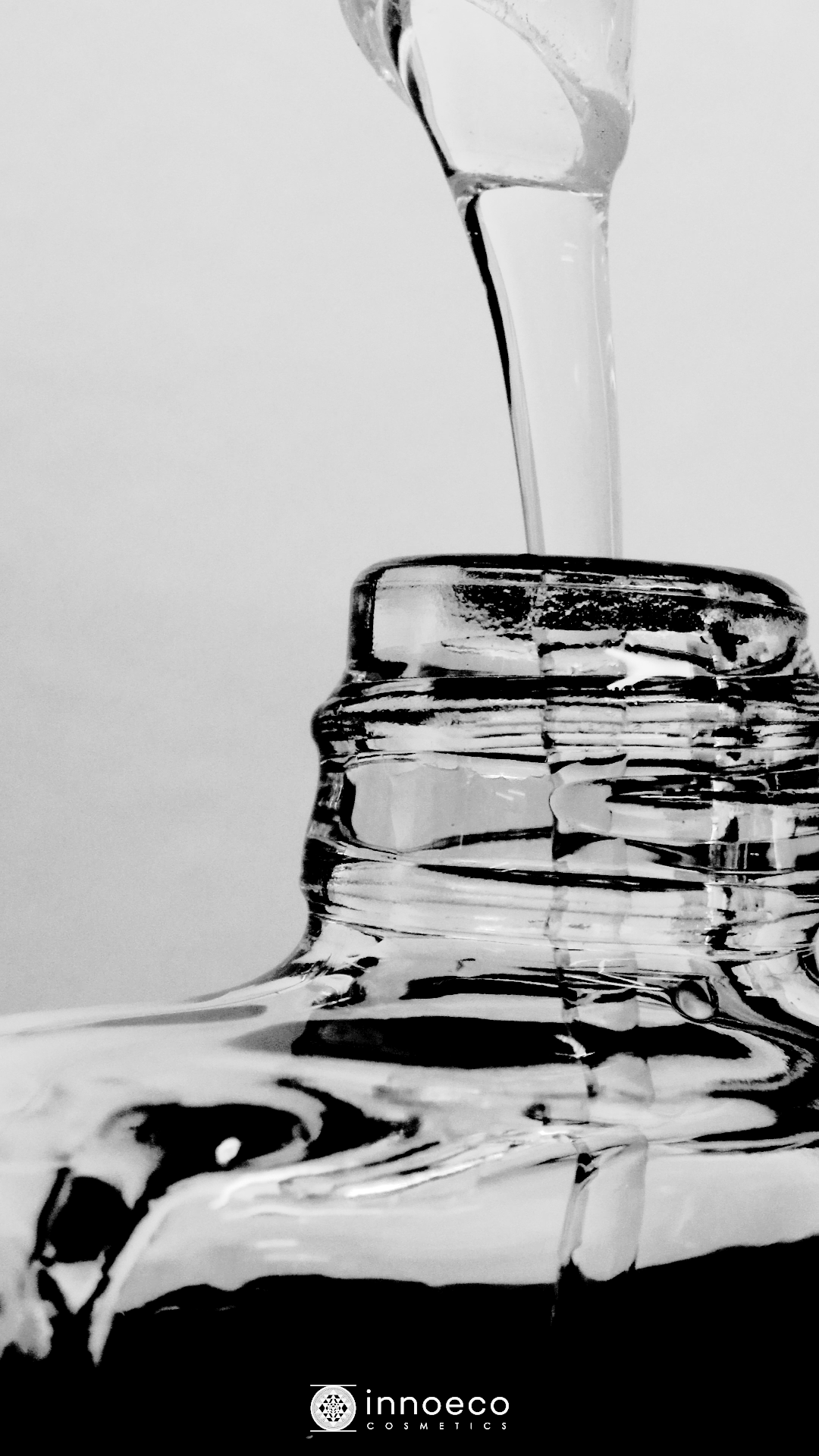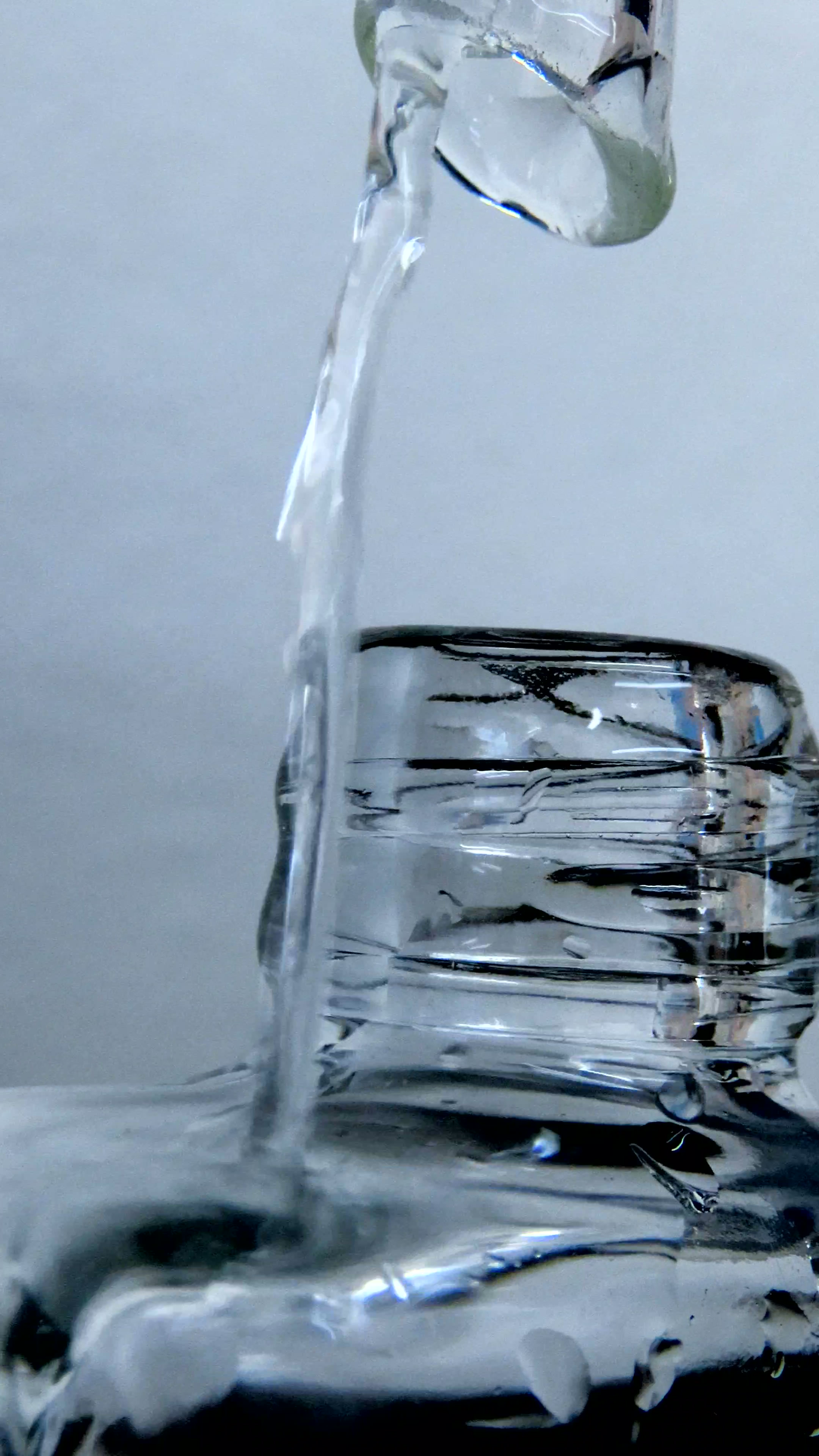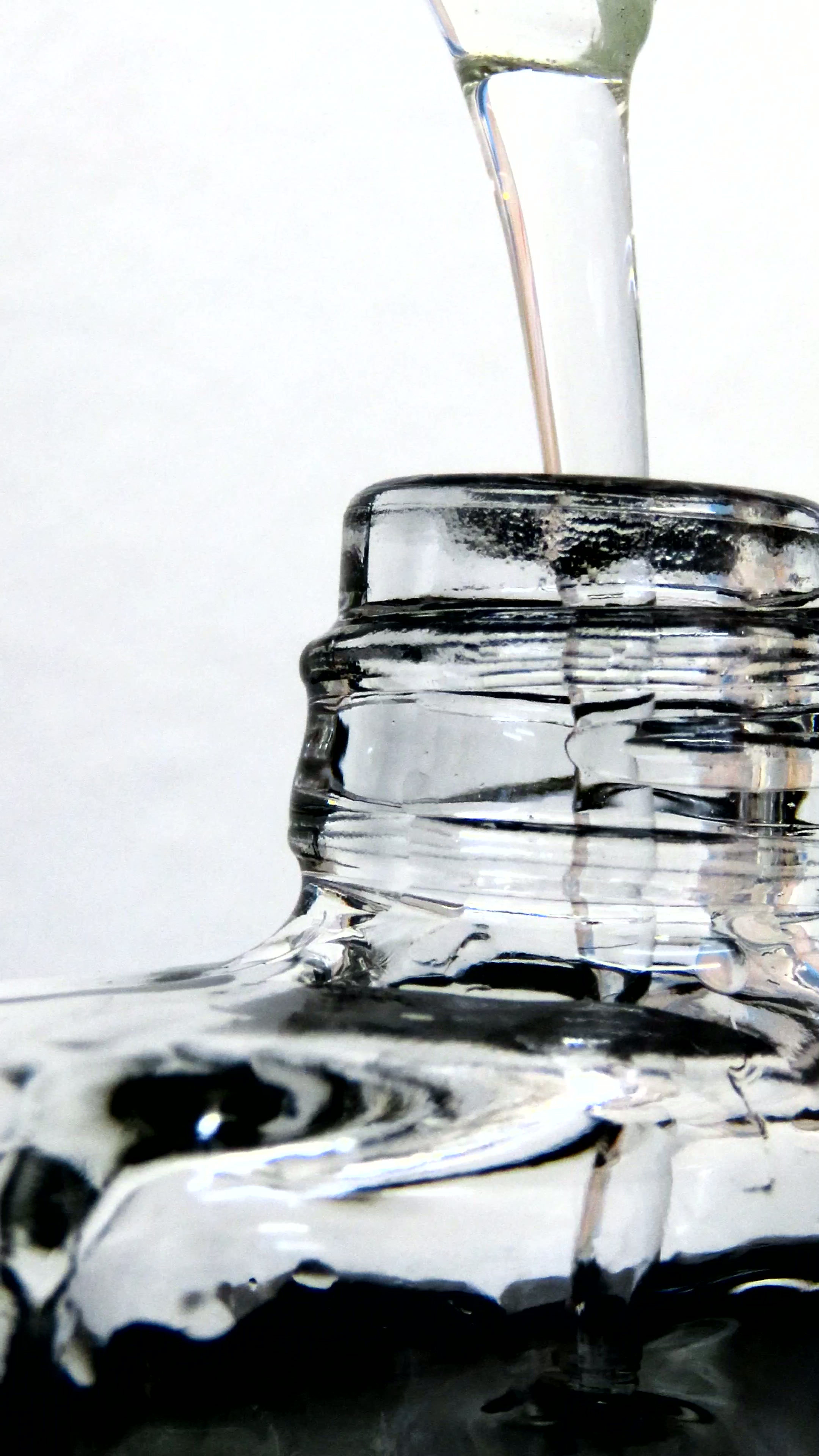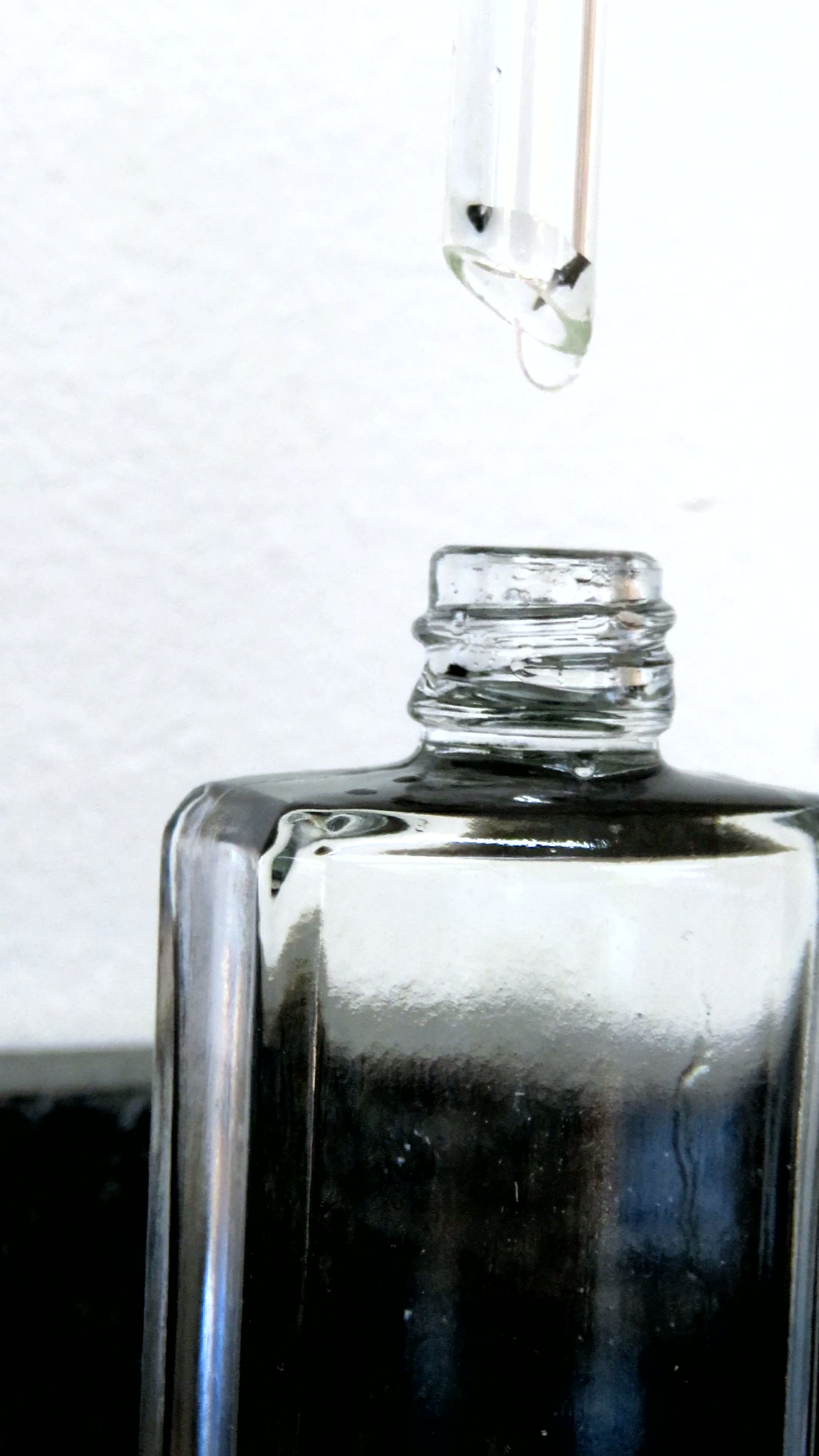Triple Alpha Hydroxy Acids (AHAs)
Efficacy in acid exfoliation is a balance of potency and tolerability. This leave-on peel is formulated with multi-acids at therapeutic concentrations, the clinical standard for effective at-home resurfacing. We use three different AHAs with varying molecular sizes to ensure multi-level exfoliation. The key innovation is the inclusion of a therapeutic dose of Allantoin. This is not an afterthought; it is a core component designed to proactively counteract the potential for irritation, allowing for consistent use and superior results without compromising barrier health.


AHA Chemical Peel

Daily Resurfacing Chemical Peel Pure By Innoeco

Finding flow

Filling bottles

Dripping into bottle
The Science
Our selection of a multi-AHA complex, featuring Glycolic, Lactic, and Citric acids, is deliberate, targeting multiple biological processes involved in skin ageing and texture irregularities.
Glycolic Acid:
The Catalyst for Epidermal Renewal
Glycolic Acid is distinguished by its low molecular weight, a characteristic that allows it to travel deeper into the skin's surface layers. Its primary function is to accelerate the skin's natural renewal cycle.
-
Surface Exfoliation: Glycolic Acid works by dissolving the microscopic protein bonds that anchor dead, mature skin cells to the surface. By releasing these cells, it accelerates the shedding of the dull, outermost layer of skin, revealing the more refined and radiant epidermal surface beneath.
-
Rebuilding the Dermal Foundation: Its effects extend into the skin's deeper supportive layer, where it has been demonstrated to activate the cells responsible for creating the skin's structural components. This results in an increased production of new collagen, the primary protein that gives skin its firmness. It also boosts the creation of molecules that draw moisture into the skin, leading to improved plumpness, elasticity, and a reduction in the visible depth of wrinkles.
Lactic Acid:
The Regulator of Texture and Hydration
Lactic Acid serves a dual purpose in our formulation, functioning as both an exfoliant and a critical supporter of the skin's moisture balance.
-
Refining Skin Texture: Similar to Glycolic Acid, Lactic Acid excels at breaking down the connections between cells on the skin's surface. This action promotes an even and controlled shedding of the outermost layer of dead skin, resulting in a smoother, more uniform texture.
-
Enhancing Natural Hydration: As an integral part of the skin's own innate system for keeping itself hydrated, Lactic Acid is an effective moisture-binding agent. It pulls water into the epidermis, increasing hydration levels and helping to prevent the natural loss of moisture from the skin to the environment. This ensures the skin's protective barrier remains strong and healthy.
Citric Acid:
The Modulator of Pigmentation and Environmental Defence
Citric Acid provides essential benefits that address uneven skin tone and defend against environmental damage.
-
Correcting Hyperpigmentation: Dark spots are the result of excess melanin. Citric Acid intervenes in the biological pathway that creates this pigment, effectively interrupting a key step that leads to its overproduction. Regulating this process helps to reduce the appearance of existing dark spots and prevent new ones from forming.
-
Neutralising Environmental Damage: As a potent antioxidant, Citric Acid helps to disarm and neutralise unstable molecules, known as free radicals, that are generated by UV radiation and pollutants. This action mitigates the cellular damage caused by environmental aggressors, a primary contributor to premature skin ageing.
In synergy, this scientifically-engineered trio of Alpha Hydroxy Acids delivers a multi-modal approach to skin rejuvenation. The formulation is designed to resurface the epidermis, rebuild its supportive structures, and correct pigmentary and textural abnormalities, resulting in a quantifiable improvement in overall skin health and appearance.
Key Benefits
01
Effective Exfoliation and Skin Renewal
– Alpha Hydroxy Acids, works by gently dissolving the "glue" that holds dead skin cells together on the surface. This process of chemical exfoliation encourages faster cell turnover, revealing fresh, newer skin underneath and promoting overall skin renewal
02
Improved Skin Texture and Tone
– By regularly removing the buildup of dead skin cells, AHAs significantly refines skin texture, making it feel smoother and softer. It also helps to even out skin tone, reducing the appearance of dullness, rough patches, and contributing to a more radiant complexion
03
Reduces Acne and Clears Clogged Pores
– Its exfoliating action helps to prevent dead skin cells from accumulating and clogging pores, which is a primary cause of blackheads, whiteheads, and acne breakouts. By keeping pores clear, it can reduce existing blemishes and significantly lower the likelihood of new ones forming
04
Enhances Absorption of Other Products
– By sloughing off the outermost layer of dead skin, AHAs create a smoother, more permeable surface. This allows subsequent skincare products, such as serums and moisturisers, to penetrate more effectively and deliver their active ingredients deeper into the skin, maximising their benefits

How to Use
1. Cleanse (Prepare for Renewal): Begin by thoroughly cleansing your skin with our Innoeco Pure Gentle Cleanser. Dispense a coin-sized amount into damp palms, emulsify, and gently massage over your entire visage using soft, circular motions. Rinse well with tepid water and then gently pat your skin completely dry with a soft, clean cloth. Ensuring your skin is fully dry before applying Glycolic Acid is crucial to minimize potential irritation and optimize its exfoliating action.
2. Apply Your Innoeco Pure Glycolic Acid Serum (The Exfoliation Step): This is the active exfoliating step. Dispense 2-3 drops of Innoeco Pure Glycolic Acid Serum directly onto your fingertips. Gently smooth the serum evenly over your entire face, avoiding the immediate eye area. Do not rub vigorously. Allow a few moments for the serum to fully absorb into your skin – you might feel a slight, temporary tingling sensation, which is normal. This step works by gently dissolving dead skin cells, promoting renewal and refining texture.
3. Follow with Innoeco Pure Moisturizer (Hydrate & Comfort): After the Glycolic Acid serum has fully absorbed (typically 1-2 minutes), apply a nickel-sized dollop of Innoeco Pure Moisturizer over your face and neck. This step provides essential hydration and helps to soothe the skin after exfoliation, locking in moisture and supporting your skin's barrier.
4. Finish with Sunscreen (Non-Negotiable Daytime Protection): For your morning routine, always conclude with a generous application of a broad-spectrum SPF 30+ sunscreen. Glycolic Acid can increase your skin's sensitivity to the sun, making sun protection absolutely critical to prevent sunburn and the formation of new dark spots.

FAQs
Q: How important is the pH of a Glycolic Acid serum for its effectiveness, and should I consider buffering it with other products?
A: The pH is crucial. Glycolic Acid is most effective as an exfoliant when its pH is acidic, typically between 3.0 and 4.0. Products with a higher pH render the acid less active. While you generally shouldn't "buffer" it immediately with alkaline products (as that deactivates it), applying soothing, neutral-pH serums or moisturizers after the Glycolic Acid has absorbed is perfectly fine and often recommended to mitigate irritation.
Q: Can I safely combine Glycolic Acid with other strong actives like retinoids (e.g., Tretinoin, Retinol) or other exfoliating acids (Salicylic Acid)?
A: Combining Glycolic Acid with other strong actives requires caution. It's generally not recommended to use them in the same application due to increased risk of irritation and barrier compromise. A common strategy is to alternate: use Glycolic Acid on certain nights and a retinoid on others. If combining with Salicylic Acid, opt for lower concentrations of both or use them at different times (e.g., BHA in AM, AHA in PM) if your skin tolerates it, always monitoring for sensitivity.
Q: Is "purging" a normal reaction when starting a Glycolic Acid serum, and how can I differentiate it from a negative breakout?
A: Yes, purging can be a normal reaction, especially with strong exfoliants like Glycolic Acid. Purging occurs when the acid accelerates cell turnover, bringing existing microcomedones (clogged pores) to the surface as temporary breakouts. It typically presents as small, fast-healing pimples in areas where you usually break out, and resolves within 2-6 weeks. A negative breakout, conversely, would involve new types of blemishes, appear in unusual areas, persist beyond this timeframe, or worsen significantly.
Q: What percentage of Glycolic Acid is considered effective, and when should one consider moving to a higher concentration?
A: Concentrations between 5-10% are generally considered effective for regular home exfoliation, offering visible results with manageable irritation. Higher percentages (e.g., 15-20%) are more potent and typically reserved for experienced users whose skin has built tolerance, or for infrequent, intensive treatments. It's best to start with a lower concentration and only increase if your skin tolerates it well and you desire more pronounced effects, always ensuring consistent SPF use.
Q: Does Glycolic Acid help with Post-Inflammatory Hyperpigmentation (PIH), and how should I use it in conjunction with other brightening agents?
A: Yes, Glycolic Acid is very effective for PIH because it accelerates the shedding of melanin-containing skin cells. It can be a great partner to other brightening agents like Niacinamide, Vitamin C, Alpha Arbutin, or Tranexamic Acid. You can layer these products (e.g., Glycolic Acid at night, Vitamin C/Niacinamide in the morning) or use them on alternating nights. Always be diligent with broad-spectrum SPF, as exfoliation makes skin more susceptible to new hyperpigmentation from sun exposure.

